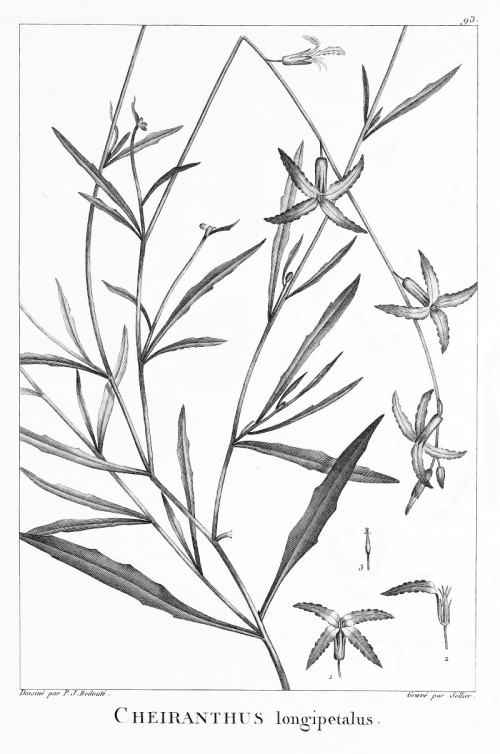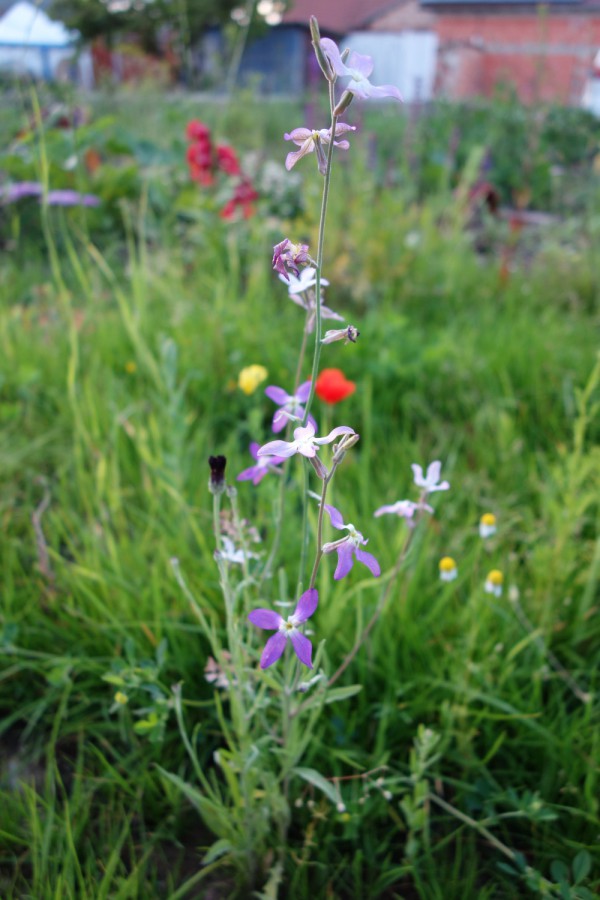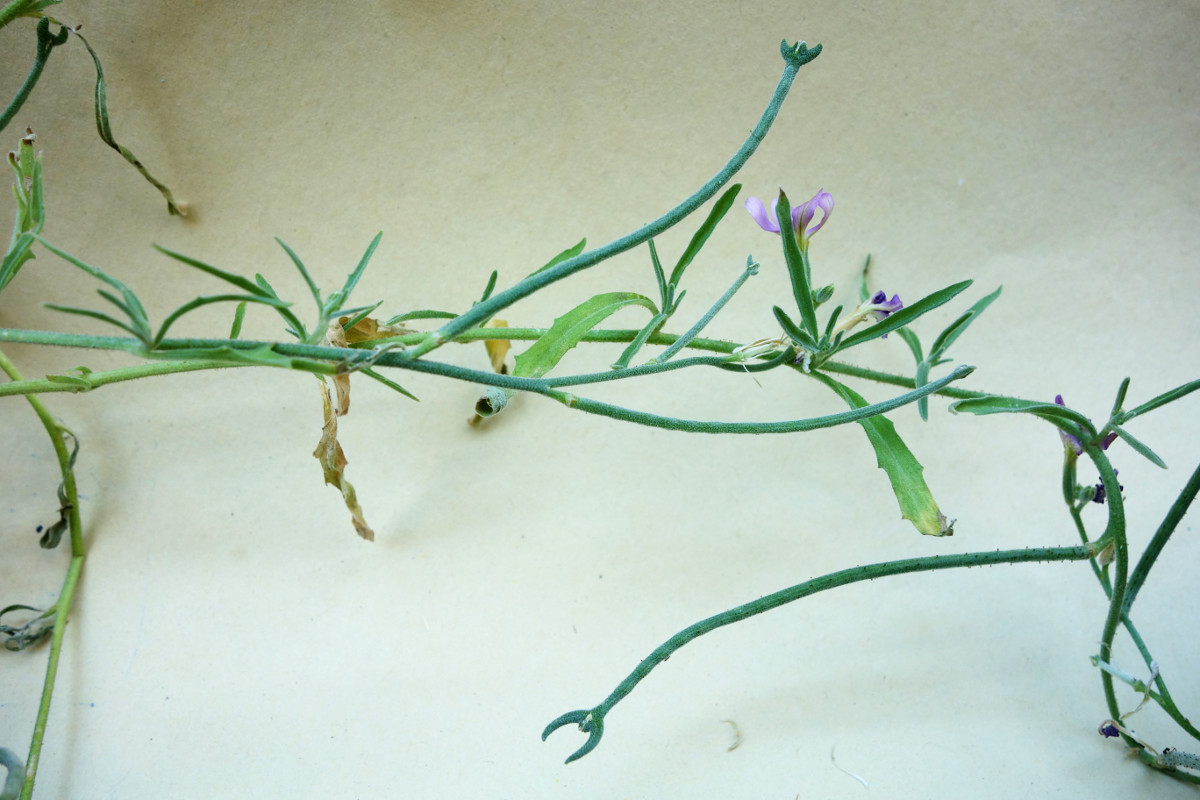Matthiola longipetala (Vent.) DC. - Brassicaceae - evening stock, night-scented stock, perfumeplant, shaqaara (arab.), Nacht-Levkoje
Annual herb, up to 50cm tall, native from Morocco to Iran and Turkey, Greece, cultivated (as ornamental) and naturalized elsewhere; leaves linear-lanceolate to lanceolate or oblanceolate, up to 8cm long; flowers usually purple, pink, yellow, white; sweet spicy (clove-like) scented only in the evening and night; fruits up to 8cm long and 1-2mm wide.
http://www.efloras.org/florataxon.aspx?flora_id=1&taxon_id=250094796
Subspecies:
Matthiola longipetala subsp. bicornis = Cheiranthus bicornis Sm.; Matthiola bicornis (Sm.) DC. = Gemshorn (german)
Matthiola longipetala subsp. livida (Delile) Maire = Grünliche Levkoje (german)
Matthiola longipetala subsp. longipetala = Großblütige Levkoje (german)
https://de.wikipedia.org/wiki/Levkojen
„A member of the Matthiola genus native to Eurasia which emits a pleasant scent in the evening and through the night… This species is primarily grown for the evening scent. It is cold-resistant and grown throughout North America…“
http://en.wikipedia.org/wiki/Matthiola_longipetala
„The Chemical composition of the volatile parts of Matthiola longipetala flowers was analysed by GC and GC/MS. 46 constituents were identified in the essential oil. The most representative compounds were eugenol (19.93%), bicyclogermacrene (13.60%), heptacosane (7.85%) and tetradecanoic acid (5.57%).“
[Flowers essential oil composition of Tunisian Matthiola longipetala and its bioactivity against Tribolium confusum insect., Hammami, S., Khoja, I., Khoja, I., Jannet, H.B., Halima, M.B., Mighri, Z., Journal of Essential Oil Bearing Plants, Vol.10(2), 2007, 162-167]
„The quantative analysis of seed oil of cultures and wild plants were compared and oil ratio were obtained as 21, 11 and 11% in autumn sowing, late winter sowing cultures and native plants respectively. γ-linolenic acid was found as main component at all Matthiola plants. The ratio of γ-linolenic acid was obtained 65.6, 63.0 and
62.6% in autumn sowing, late winter sowing and wild plants, respectively. The other main constituents of the all oils were obtained as oleic and linoleic acids. The ratios of oleic and linoleic acids were obtained 11.04% and 10.70% in autumn sowing, 13.18% and 11.53% in late winter sowing, 12.46% and 11.01% in wild plants, respectively.“
[Fatty Acid Composition of Matthiola longipetala ssp. Bicornis from Turkey., Karaman, S., Gulseven, M., Comlekcioglu, N., Ilcim, A., Int. J. Agric. Biol, Vol.13(4), 2011, 581-585]
The headspace of air-dried powdered flowers contained dimethyldisulfide (28.7%) and dimethyltrisulfide (18.0%), 2-ethylfuran (21.1%) and 2-pentylfuran (6.0%), hexanal (9.5%), pentanal (12.7%) and 2-nonenol (2.7%).
[Investigation of some chemical constituents and antioxidant activity extracts of Matthiola longipetala subsp. longipetala., Abdelshafeek, K.A., Abdelmohsen, M.M., Hamed, A., Shahat, A.A., Chemistry of Natural Compounds, Vol.49(3), 2013, 539-543]

Matthiola longipetala (Vent.) DC. as Cheiranthus longipetalus Vent.
Ventenat, E.P., Description des plantes nouvelles et peu connues, cultivées dans le jardin de J.M. Cells, t. 93 (1802) [P.J.Redouté]
http://plantgenera.org/species.php?id_species=647971

Matthiola longipetala subsp. longipetala CC BY-SA 3.0, Author: Andreas Kraska

Matthiola longipetala subsp. bicornis (with fruits) CC BY-SA 3.0, Author: Andreas Kraska
